Types of shovels and their features
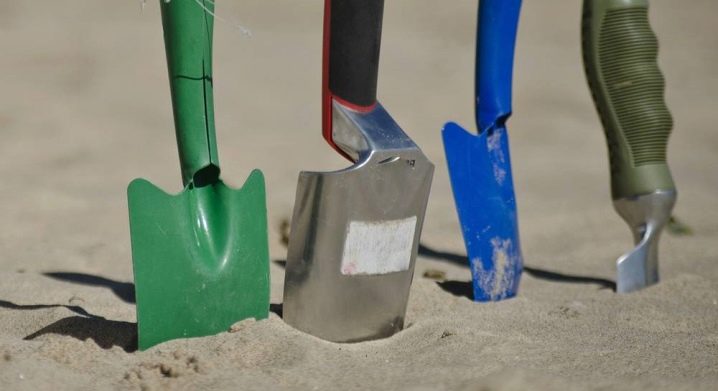
The shovel is arguably the most common hand tool for a variety of jobs around the world. On the other hand, it is not even entirely correct to call it one instrument, since there are many types of such a device. And although they are all similar, at first glance, with the wrong model selection, it will quickly become obvious that there is a difference.
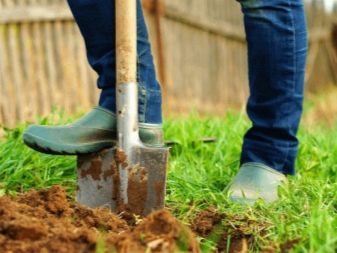
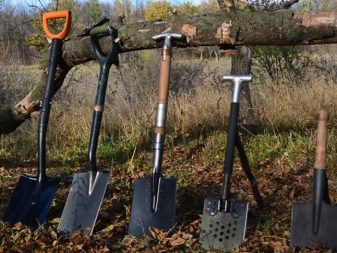
Classification by the shape of the web
This classification option is the simplest, it will orient any person who has a personal plot. Such a division of shovels is rather arbitrary, since each of the varieties described below is divided into smaller varieties, which will be discussed below. As for the shape of the canvas, in general there are only two types.
- Bayonet shovel has a straight and flat canvas, practically devoid of even the semblance of sides, but sharpened in the form of a wedge or a rounded end. The main purpose of such a tool is to dig deep, for which the sharpening of the canvas is needed. In its upper part, to facilitate the work, there are even special projections on which it is convenient to press with the foot, complementing the manual force. For digging a garden, such a simple device is simply irreplaceable.

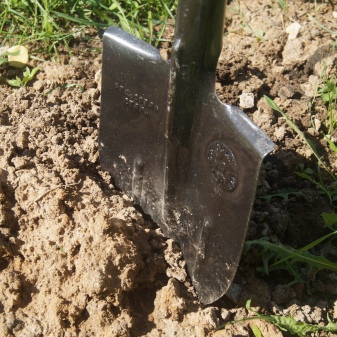
- Completely different functions of pick shovel, which has other names, for example, shoe and soviet. The canvas here is almost always located at some angle to the handle, and it itself is, as it were, concave. Such a shovel is usually three-sided and has a characteristic shape resembling a tray. Although the end of the web is usually not pointed, this design is optimal for excavation - it is convenient to use it to move large volumes of bulk materials.
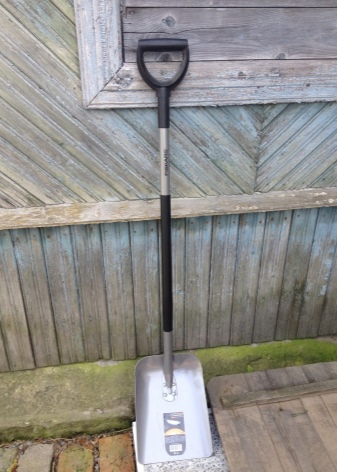
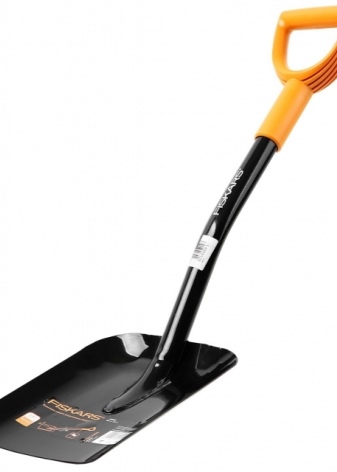
It is worth mentioning that some varieties can be considered combined, occupying a certain intermediate position between the two described above.
Division by appointment
GOST - an omnipotent document regulating literally all aspects of our life - clearly describes the features of shovels designed to perform various tasks. According to its content, there are three large categories of such tools: construction, gardening and handling shovels. Some varieties cannot be attributed to any of the named categories, therefore we will take them out separately - in the category of special ones.

Construction
For the needs of construction, approximately the same shovels are used as for the processing of a personal plot. Globally, they are divided into three classes.
- Digging shovels are needed for digging foundations and other similar work. Their point can be tapered, rounded, or even rectangular. A typical digging shovel with a slightly inclined blade is popularly called "American".
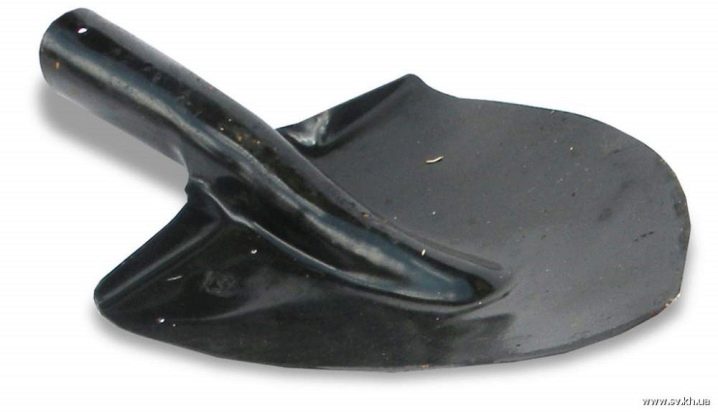
- Collecting shovels are divided into smooth and faceted, which depends on what material will be moved with their help. They are needed to move any bulk materials, including sand, cement, crushed stone, as well as excavated soil.
- Mortar shovels intended for concrete and mortar. They vaguely resemble their collating counterparts, but have a web shape specially designed for semi-liquid cargo.
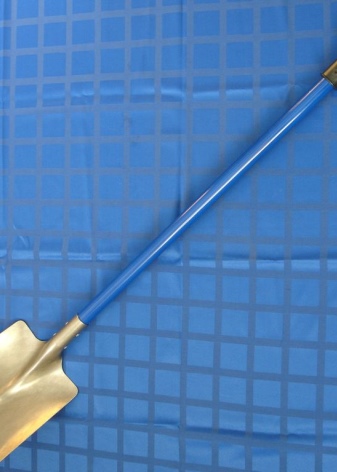
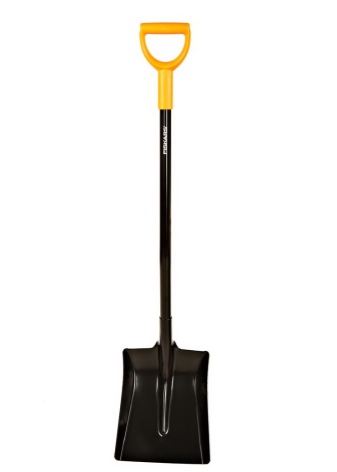
Gardening
The tool of this category is very similar to the construction tool, only people who do not have outstanding physical training usually wield it, therefore such products are often produced taking into account the small characteristics of the soil to be processed, as well as specific tasks.
- Perekopochnaya called a bayonet or digging shovel with a wedge-shaped point. It is used not so much to create pits, but to loosen the soil; its use is effective when working with soils with a hardness not higher than average.
- Diggeron the contrary, it is focused on grabbing as much soil as possible and pulling it out, forming a pit. Accordingly, the blade here is not wedge-shaped, but rounded, which increases the area of the blade and allows you to collect more soil, although in general it is the same bayonet shovel.
- Universal It is customary to call a shovel a certain averaged solution, which should show approximately the same efficiency in solving both problems described above.
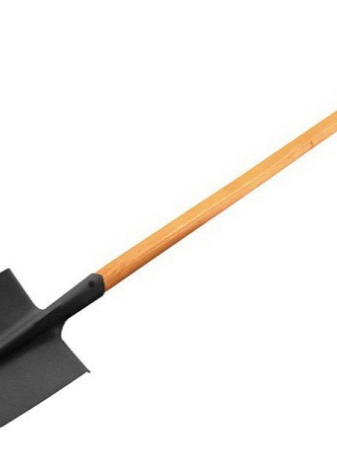
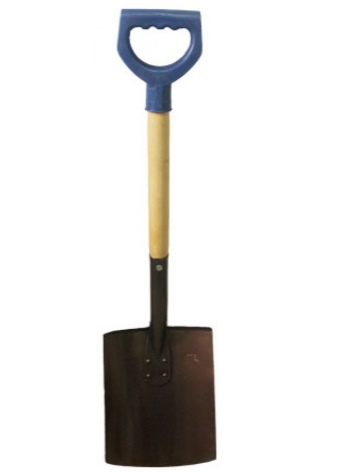
Loading and unloading
The main tasks of shovels of this type are described in detail in the name of the category - these are different types of shovels. In agriculture, a kind of averaged version of such a tool is usually used, which helps to work with different materials and substances. However, in a large enterprise where working day in and day out involves loading and unloading the same raw materials, it is better to choose the option with a canvas that optimally matches the properties and consistency of your cargo.
- Sand shovel claims to be universal in its field - its almost square blade in the form of a scoop, located at an angle of about 35 degrees in relation to the handle, is successfully used for loading not only sand, but also most other bulk materials. It is this type of shovel with high sides that can be called one of the most common in the world.
- Grain in shape it differs little from sand, but it assumes that its load will not be so heavy, therefore it itself also weighs little and is made of relatively fragile materials. In addition to grain, it can be used for loading other light bulk materials.
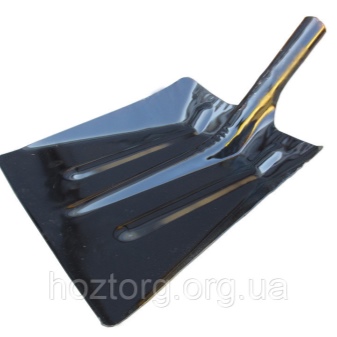
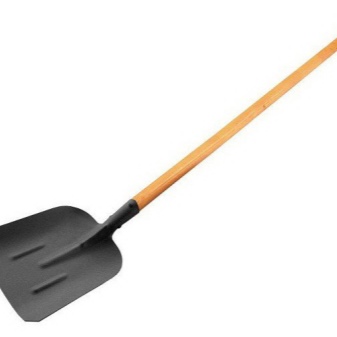
- Coal - another refinement option for a sand shovel. Since coal with a significant volume does not weigh so much due to the abundance of voids, and it simply does not fit on a small canvas, the scoop is usually made quite wide, giving it the shape of a trapezoid.
- Metallurgical The shovel is very similar to the coal one, but has a rounded shape on the side of the elongated handle to protect the worker from high temperatures.
- Pedigree (crushed stone) The shovel is designed for loading bulk cargoes necessary in the metallurgical industry and heavy industry - with its help the same coal is loaded, as well as crushed stone, ore and rocks. Its load does not always weigh a lot, but it often provides significant resistance to the scoop, so the latter must be especially durable.
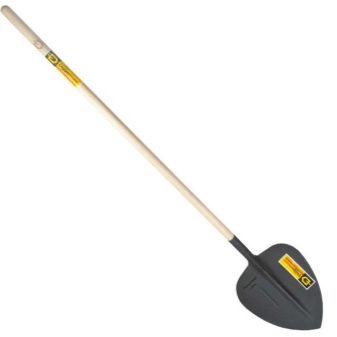
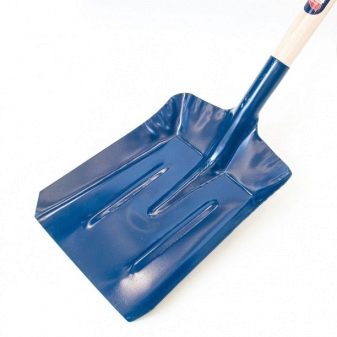
- Mining (miner's) the shovel is very similar to the one described above, but differs from it in the shape of the blade. If the previous one looked more like a scoop, then this one, despite the presence of the sides, has a sharpened wedge-shaped blade, like that of its digging counterparts.
- Snow shovel - another variety that does not need special introduction. Due to the fact that snow usually molds well, it has only one side, at the handle, but it is usually made as wide as possible in order to clear paths in one pass.
This is one of the few types of shovels whose blade is made of metal less often than from alternative materials - plastic or thick plywood.
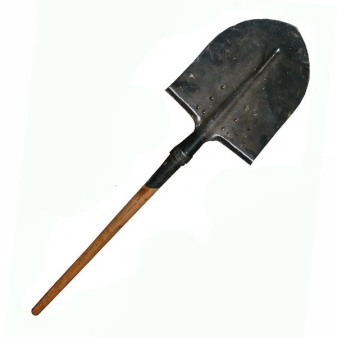
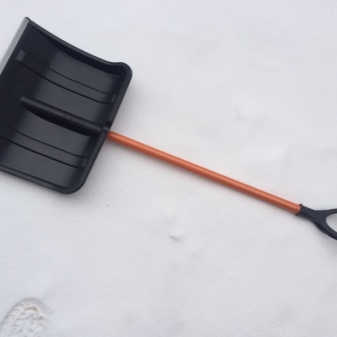
Special
If the above types of tools are very widely used in various fields, then we must not forget about those shovels, whose design features are due to the implementation of only one specific, and even not an everyday task.
- Shield shovelis probably less like any other shovel. The fact is that its main purpose is not to dig or collect, but to push the load, which is snow. Its use is appropriate in all cases when there is a necessary cover under the snow cover, which can be damaged by the tip or, conversely, can dull it.
You cannot do without a panel tool when cleaning rollers, as well as asphalt streets, therefore, such a shovel is often also called a sidewalk shovel.

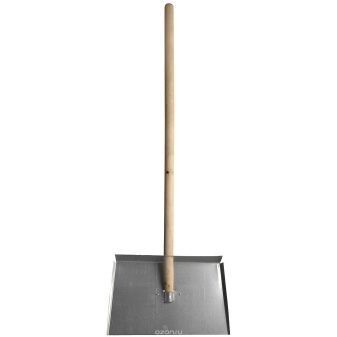
- Name of the bread shovel speaks for itself - it is used in the kitchen to load raw bread into the oven and extract it from there in finished form. Similarly, it can be used for any other baked goods that are baked without a baking sheet - for example, for pizza. Such a shovel is made entirely from a single piece of wood and is completely flat, without the slightest protrusions.
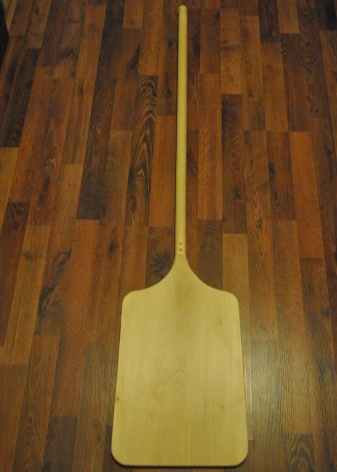
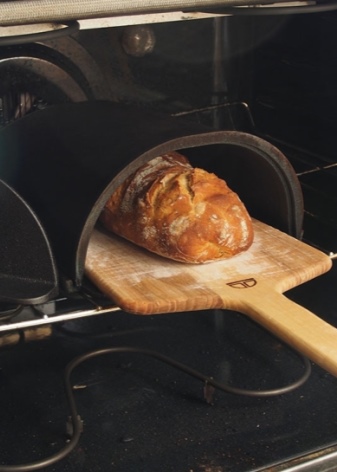
- Fire shovel can be seen on any fire shield. It is usually very small and light, so that it is convenient to use it even in crowded and rushed conditions. It has the features of both bayonet and shovels at the same time, so that the fire can be extinguished with sand, if there is one at hand, or even soil that has just been dug out with its help. It is often intrinsically safe - it is specially painted with non-flammable dyes to protect it from accidental ignition. Often, such a shovel is made entirely of metal.
- Drainage shovel it is difficult to confuse with any other - its canvas is distinguished by an unusual, highly elongated and at the same time narrowed shape. It is well suited for digging trenches of small width, which is reflected in the name.
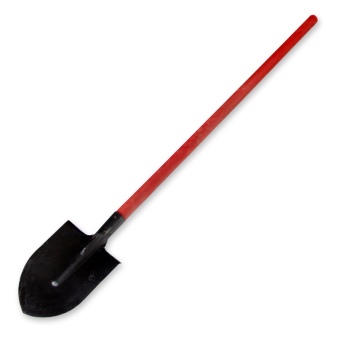
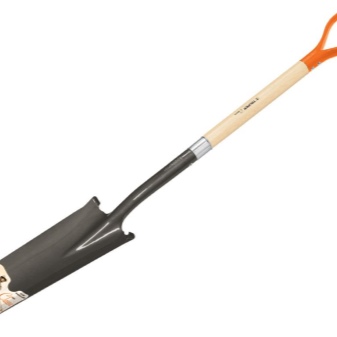
- Garden shovel it has an extremely short length - usually no more than 40 cm. This is a bayonet tool designed for digging small single holes - it is often used for transplanting shrubs. All other small-sized blades (small infantry, large sapper, tourist, automobile) are very similar to each other, but are used for different needs - digging trenches, freeing a stuck car, and so on. The small size complicates the use a little, but they allow you to always have such a tool at hand.
For added convenience, commercial small paddles are made with a telescopic handle or transformer technology, allowing them to fold in half. Thanks to this, with a small size, a long handle and the possibility of simplified work can be provided.
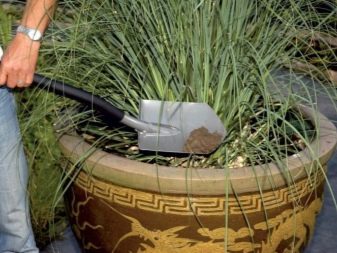
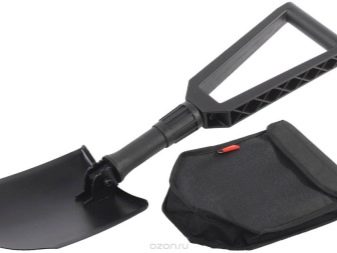
- Felling shovel rightly considered one of the rarest, its main purpose is to assist in felling trees with a trunk thickness of no more than 30 cm.Its blade has a specific shape, making the whole tool very convenient as a lever - it is inserted into the cut and pressed at the right angle on the end a handle to overturn a filed tree. To minimize the amount of effort required, the stalk is usually made as long as possible.
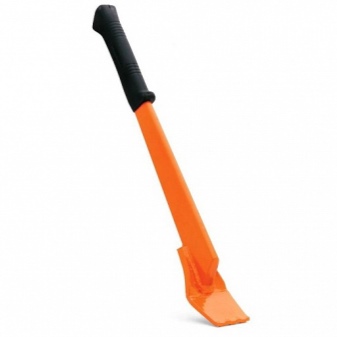
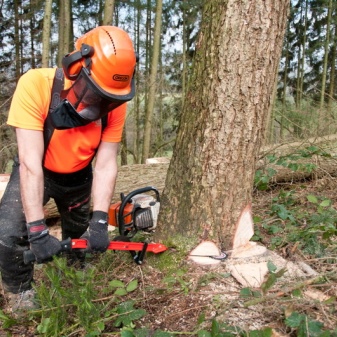
As you can see, the choice is wide. All that remains is to deal with the tasks that require a shovel. But in any case, the owner should always have 3 main types of shovels: bayonet, shovel and a small type of sapper, which can be taken for fishing and thrown into the trunk of a car before a long journey.
For what kind of shovels there are, see the next video.



































































The comment was sent successfully.